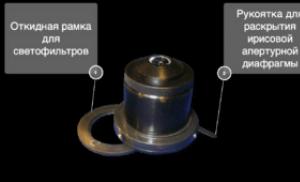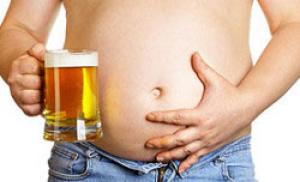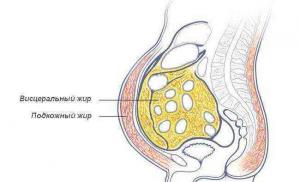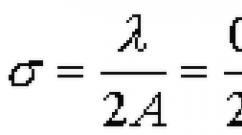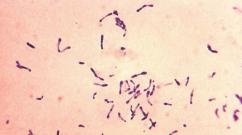Homemade homemade food waste composter. Home composting methods
Mankind is gradually coming to the conclusion about the inevitability of waste recycling. People collect and recycle glass, plastic, paper and metal. For those who are not going to stop there and want to recycle the leftovers from their table, there are special composters that can be used at home and at the same time receive fertilizer useful for the garden and vegetable garden. Recycle has selected the most optimal and commercially available organic waste recycling machines.

Worm cafe
The Australian company Tumbleweed Worm Cafe vermicomposter is one of the most popular home composters available in Russia. The principle of its operation is based on the use of live worms. They, eating your organic waste, form the so-called vermicompost and vermicelli, which are used as fertilizer.
The recommended number of worms for settling in this composter is 5000, at least 1000. A set of 5000 individuals of a mixed population and 10 kg of substrate for feeding them will cost about 3300 rubles.
When assembled, the Worm Cafe vermicomposter will take less than half a meter in your kitchen. It is made of black recycled plastic that can be recycled. The device consists of three trays, a ventilation system, a coconut fiber briquette, a tray with a tap and a sludge trap and a fly-proof cover.
Before settling the worms into the composter, it is necessary to create the necessary conditions for them: wet the coconut bedding block and place it in the cardboard packaging of the working tray. Then put the worms there, cover them with a napkin and sprinkle with earth. Empty the composter as soon as it is full.

Can-o-worms
Another Tumbleweed model available in Russia. It is slightly smaller than the Worm Cafe. The two trays included in the basic composter set can be supplemented with other containers. The rest of the Can-O-Worms is designed in the same way as the Worm Cafe. You need to empty it as it fills, but not more often than once every two weeks.

Worm factory 360
Worm Factory 360 is another model of Tumbleweed's homemade vermicompost, but it is not sold in Russia. The device consists of four rectangular trays and, if desired, can be expanded with additional containers (up to 8 pieces). It will take about three months to completely recycle the waste in the first tray, and then the process goes faster - up to four weeks.
The Worm Factory 360 composter can be used both indoors and outdoors. On Ebay, it costs 4000 rubles, but delivery will have to be negotiated with the seller separately.

VermiHut
Another home composter that can be purchased on the Internet is made by the American company VermiHut. It consists of five trays and, according to the manufacturer, will be able to hold up to 5 kg of worms, which are capable of processing 2.5 kg of waste per day. The vermicompost also includes a pallet, a vermicum collection tray, an air vent cover, a coconut fiber briquette and a thermometer.
VermiHut machines work on the same principle as Tumbleweed vermicomposters. On Ebay, they are sold with detailed instructions for 2890 rubles, however, in this case, you will have to negotiate with the seller about delivery from the United States.

NatureMill PRO HC52CA
Automatic composters from NatureMill are significantly more expensive than their non-automated counterparts, but more convenient to use. They are powered by an electrical outlet and look great in the kitchen. Capacity - up to 8 kg of waste at a time, which, under the influence of high temperatures, 70% is disposed of into compost liquid. The rest of the coprolite can be used for soil fertilization.
NatureMill composts can process up to 55 kg of food waste per month. You need to empty the container no more than once every two weeks, no other intervention is required.

SCD Probiotics K100
For those looking for a simpler composter, SCD Probiotics' non-automated K100 is the right choice. It is an urn, similar to a trash can, but supplemented with a faucet to drain the liquid. The composter is designed for 19 kg of food waste. It does not require colonization of worms; utilization is carried out using fermented organic matter "bokashi" grown on wheat bran.
SCD Probiotics K100 is not sold in Russia, but you can buy it online. Includes a bokashi microorganism bag.

Mr. Eco
Another inexpensive option is the Mr. Eco composter. But it is only suitable for plant waste. It looks like a trash can and attaches to the inner door of the kitchen cabinet. To dispose of waste, you must throw food leftovers into the basket, first wrapping them in a paper towel or newspaper. Then scroll the knob on the right side of the urn. Garbage from the upper compartment will fall into the lower one - at the bottom of the composter, thus making room for other waste.
The composter comes with biodegradable plastic bags to help eliminate unpleasant odors and make the basket easier to clean. They must be placed in the trash can before using it. It is necessary to extract the resulting fertilizer once a month and a half. You can buy the Mr. Eco device only via the Internet.

Urban composter
Urban composters have a round shape and, like Mr. Eco machines, resemble a wastebasket. They can hold up to 15 kg of waste at a time. Disposal of food residues is carried out through anaerobic decomposition processes, similar to those that occur when Bokashi is added by microorganisms.
However, in the case of the Urban composter, we are talking about microbes that come with a special compost spray. It is evenly distributed by means of a dispenser to the garbage thrown into the trash can. After filling the composter with waste, it is necessary to drain the liquid from it using a tap every four to five days. It will take four to eight weeks to completely convert food leftovers into fertilizer.
Help: How the vermicompost works
The vermicompost consists of several trays. The first of them is filled with food waste. It is believed that compost worms eat everything that was once alive: fruit and vegetable peels, tea bags and tea leaves, coffee grounds, dust from a vacuum cleaner, hair and animal hair, newspapers, packing cartons from eggs, milk or pizza. crushed eggshells.
When the worms eat the waste in the first tray, a second tray is placed on top, which has a perforated bottom and into which food waste is also placed. The worms move from the lower tray to the upper one. When the food is eaten in the second tray, the third tray is placed on top and the process is repeated. The result is 100% natural biohumus, which can be used for fertilizing a garden or vegetable garden. The more varied the waste you use, the better coprolite will be.
Compost for fertilizing a summer cottage can be prepared at home. Making compost at home helps you to benefit from the huge amounts of food waste that is usually thrown away.
The zealous owners, instead of throwing the peels and stubs into the trash heap, put them in a special container and fill them with composting liquid. The result is a high-quality organic product, on which you can grow indoor plants or use as fertilizer in the country.
What is compost
Compost is a fertilizer obtained from organic components as a result of their decomposition by microorganisms under aerobic conditions, that is, when air is available. Compost can be made from any organic matter, including feces, household and industrial waste. After the decomposition of the components, the waste turns into a substance containing macro- and microelements in a form accessible to plants: nitrogen, phosphorus, potassium, manganese, magnesium, boron and others.
Properly made compost has pleasant organoleptic characteristics. It is loose, homogeneous, does not stick to hands, and does not release moisture when squeezed. The compost looks like a crumbly mass of dark color. It smells like fresh earth.
For composting you need:
- positive temperature;
- oxygen access;
- optimal degree of moisture.
There are many compost recipes in which superphosphate, gypsum, lime and other, sometimes unexpected substances are added to organic matter. But ordinary compost is prepared from one organic matter. Such a mass is a universal fertilizer on which any cultivated plant will grow by leaps and bounds.

Usually, compost is prepared in the country or in a personal plot, in open-air areas. Organic waste is piled, piled or in a compost box, from which it will be convenient to get it out. The latter condition is necessary, since the compost has to be mixed several times per season so that no caked places remain in the center of the heap, which does not receive oxygen. Mixing the compost accelerates maturation, that is, the decomposition of organic matter and the transformation of stems, leaves, branches and peels into a homogeneous, loose mass that does not resemble the smell and color of the original raw materials.
When does it make sense to make homemade compost? This can be useful for indoor flower lovers who want to feed plants with a natural substance. Or to avid summer residents who, over a long winter, can prepare several bags of fertilizer, saving on the purchase of humus or manure.
Types of compost
Peat manure compost made from peat and manure, taken equally. Any manure can be taken: horse, sheep, cattle, chicken and rabbit droppings. In addition to pork - due to the nutritional characteristics of their manure, the exorbitant amount of nitrogen - this will ruin any soil.
Sawdust and slurry compost- instant fertilizer. It can be used to feed plants a month and a half after laying the compost heap. For composting, slurry is poured between peat or sawdust boards. 100 kilograms of bulk materials are consumed per 100 liters of slurry. After the peat or sawdust has absorbed the slurry, a heap is formed from the mass, in which the composting processes will immediately begin. It is useful to add phosphorus to the mixture at the rate of 2 kg of superphosphate per centner of organic matter.

Peat and fecal compost is done like the previous one, but instead of slurry, the contents of country toilets are used. It will not work to replace peat with sawdust, since sawdust does not absorb odors so well. Such compost is not used on vegetables, but it is suitable for a garden and perennial plantings, including ornamental crops.
There is no need to be afraid of helminthiasis. In the compost heap, the mixture is heated to 80 degrees. At this temperature, human helminths die along with eggs and larvae.
Garden multicomponent compost- universal fertilizer for gardens and vegetable gardens. For composting, garden waste is laid: weeds, cut shoots, fallen leaves, tops. The result is a black, odorless mixture, fine-grained structure, oily to the touch. As some gardeners say, looking at such compost, “I would eat it myself”.
In order for the composting process to bring good compost, the pile must be shoveled at least twice a season and moved to another place. The fertilizer will be ready in at least a year.
Dung-earth compost- instead of peat, they take ordinary land. For 70 parts of manure, there should be 30 parts of soil. The components are laid in layers. The soil will absorb the solution released from the manure and will not allow the nitrogen to "escape" from the manure heap in the form of gas (ammonia).

Manure-earth compost contains 3 times more nitrogen than humus obtained by overheating manure in heaps. Having laid a dung-earth heap in the spring, you can already get high-quality, highly nutritious compost in the fall.
You don't have to use peat or soil to make compost in your apartment. One of the advantages of the technology is that the compost can be made from kitchen waste alone. The fertilizer is prepared by itself. To prepare it, you do not need to buy anything special, except for a plastic bucket - therefore it is sometimes called “ plastic compost».
Let's take a closer look at how to prepare compost in an apartment. The fertilizer matures in a suitable compost container under the influence of a ferment made from special microorganisms. Put a grate on the bottom of the bucket. From above, the container should be tightly closed with a lid. Experts call the fertilizer obtained in this way "urgas".
Any food waste is suitable for composting: cleaning vegetables, dried bread, banana peels, eggshells, melon peels, etc. The more components in the compost mixture, the higher the nutritional value.
Protein products and fats are unsuitable for the production of compost in plastic buckets: meat, fish (including bones), seeds, seeds, seeds, nut kernels, dairy products.

Stages of making compost with your own hands:
- Place the wire rack in a plastic bucket.
- Punch 5 holes in the garbage bag with an awl - through them the liquid formed as a result of fermentation will drain.
- Insert the bag into the bucket so that its bottom is on the wire rack.
- Put food waste into the bag, crushing it so that the size of each piece is no more than 3 centimeters.
- Lay the waste in layers, moisten each layer from a spray bottle with a solution of the EM preparation.
- Squeeze air out of the bag and place the weight on top.
- Refill the bag with waste as it accumulates in the kitchen.
EM liquid is a preparation containing strains of microorganisms that rapidly decompose organic waste. Notable EM liquids:
- Baikal,
- Urgas,
- Humisol,
- Tamir.
After filling the bag to the top (this can be done gradually, as kitchen waste accumulates), it is kept at room temperature for a week, and then transferred to the balcony.
By this time, liquid will accumulate at the bottom of the bucket - this is not a waste of production, but a valuable substance enriched with bacteria that can be of great benefit in the household. After treating the toilet bowl or cat litter with this liquid, the unpleasant odor disappears. For the same purpose, liquid can be poured into sewer pipes. In addition, it is suitable for watering indoor plants.
Compost, obtained with the help of preparations at home, is taken out to the country in the spring. By this time, a dozen or two plastic bags with urgaz have accumulated on the balconies. It is applied to the beds in the same quantities as ordinary compost.
Features of composting
You can prepare compost in the country in a homemade composter made in the form of a box, or in a converted old 200-liter metal barrel. The shops sell garden or landscape composters. They are neat containers with a lid that fit well into the surrounding landscape.
Composters can only be used during warmer months. With the onset of frost, the container is freed from the contents.
The thermo-composter is arranged differently - in such a device, it is possible to process vegetation into fertilizer 365 days a year. Thermocomposters work even in cold weather. They represent a large thermos in which the heat released during the decomposition of organic matter is accumulated.

The vermicompost is another composting tool available in stores. In it, not microorganisms, but soil worms will work on the production of compost, converting vegetation and kitchen waste into humus. The vermicomposter can be placed at home as it does not emit an unpleasant odor. Earthworms and Californian worms are used to decompose waste.
Composting in a heap or composter consists of several stages.
- At the first stage - mesophilic- the raw material needs to be moistened. Colonies of microorganisms can only develop in a humid environment. The more the raw materials are crushed, the more water will be required for hydration, but the compost will mature several months faster. The fact that the mesophilic stage is completed will be evidenced by the subsidence of the heap.
- Second phase - thermophilic... The temperature rises in the heap. It can heat up to 75 degrees, while harmful bacteria and weed seeds are killed, and the pile is reduced in size. The thermophilic phase lasts from 1 to 3 months. At the thermophilic stage, the compost heap must be shaken up at least once after the temperature has dropped. After moving the mass to a new location, the temperature will rise again, as the bacteria will receive oxygen and increase activity. This is a normal process.
- The third stage is cooling, it lasts 5-6 months. During this time, the cooled raw material is reheated and turns into compost.
Conditions for maturation of compost:
- Place the pile or composter in the shade, as the sun will dry out the ingredients and will need to be watered frequently to do unnecessary work.
- It makes no sense to lay a small compost heap - with a lack of raw materials, bacteria will not be able to develop and the plants, instead of overheating and turning into fertilizer, will dry out.
- The optimal height of the heap is one and a half meters, the width is one meter. Larger sizes make it difficult for oxygen to enter the heap, and putrefactive bacteria will multiply there instead of aerobic bacteria. That is, instead of fragrant loose compost, you get foul-smelling mucus.
- Pile any plant debris into the compost heap throughout the season. If the plot is small and there is not enough weeds and tops for the volume of the heap, borrow from neighbors who did not think to start a composter.
Is it possible to put in the compost weeds and cultivated plants with signs of diseases, for example, tomato tops affected by late blight, in the compost? After heating in a compost heap, weed seeds and spores of harmful microorganisms lose their ability to germinate, therefore, plant residues can be laid for composting. The exception is plants affected by viruses. They need to be burned immediately after they are removed from the garden.
Sometimes it is advised to place the compost on a bed of clay, peat, or sand. If the pile is laid without faeces and slurry, then the pillow is not needed, as it will prevent the earthworms from entering the pile, and without them the maturation of the compost will take longer.
Microbiological preparations or bird droppings will help speed up the maturation of compost. Plant materials are either sprayed with liquid or transferred with wetted broiler manure. These heaps will need to be watered more often.

How to use compost correctly
Compost in the country can be applied to all soils, for any crops, in the same dosage as humus. Mature compost is introduced into the furrows when planting seedlings and sowing seeds. High beds can be formed from it.
The most common way to use compost is to mulch any crop, from trees to lawns. The compost will serve as both food and mulch.
Using a conventional aquarium aerator, compost tea can be made from compost - a liquid saturated with beneficial microorganisms. Compost tea is used for foliar dressing. The liquid not only serves as a source of nutrients for plants, but also protects against fungal and bacterial diseases, since tea microorganisms are antagonists of pathological microbes.
The compost obtained in bags in winter is added to the seedling mixture. Seeds are not sown in clean compost, since it is a concentrate. But if you dilute it with peat or garden soil so that the compost in the mixture turns out to be 25-30%, then you get the mass that is optimal in acidity, texture and nutrient content, in which any seedling will grow.
Growing plants directly in compost is possible. Summer residents traditionally, right on the heap, sow cucumbers, pumpkins or melons, but by this time the maturation of the compost should be completed.
The thermophilic compost heap can be used for early harvests of cucumbers. To do this, deep (40 cm) holes are made on a heated mass, covered with fertile garden soil, in which cucumber seedlings are planted. The admission allows you to make a run in growing vegetables for at least 1 month. If you put wire arches on the compost heap and stretch a film over the plants, you can get the harvest 2 months earlier.
Compost is irreplaceable when growing carrots. Manure and humus should not be applied to the beds where carrots will be sown - because of them, the roots are deformed, acquire an ugly shape, and branch. Compost is another matter. It can be applied even in the spring before sowing carrot seeds in the garden, at the rate of 2 kg per sq. m.
Mulching with compost increases yields and improves the taste of vegetables and strawberries. The product acquires a typical pronounced taste of the variety, it picks up more sugar.
By placing a compost heap on the site or installing a composting container, you will create a waste-free production in which plant residues will return to the soil, and it will never become scarce.
Organic live farming technology allows you to preserve and use valuable substances and fertilizers even at home. Home composting is especially important for summer residents with a vegetable garden on a windowsill, balcony or a small garden plot that is visited only on weekends.
Where to use home compost
Leftover products are valuable organic raw materials. Getting to landfills, organic matter begins to rot and poison the soil and groundwater with decomposition products; harmful landfill gas.
- Homemade compost can be used for the preparation of seedling soil... For 10 kg of soil, you only need 100 g of compost (4 tablespoons). The soil mixture is left to mature for 10-14 days. During this time, effective microorganisms actively multiply. Then you can sow seeds for seedlings into this nutritious soil.
- Homemade compost will serve great pre-sowing fertilizer when planting potatoes... One handful of compost is placed in the hole. Top layer of earth and sprouted potato tuber.
- Home compost accelerates the formation of humus... As they say, worms on EM bacteria flock like cats to valerian. In addition, compost raises the temperature and warms up the soil better and faster.
- Compost prevents the reproduction of harmful microorganisms, does not contain weed seeds (like manure) suppresses pathogenic microflora.
- By sending food and vegetable leftovers to compost, we not only harvest valuable natural fertilizer, but also saving local lands from unnecessary pollution and we improve the ecological situation in the region that we love and cherish.

What can you make homemade compost from?
At home, ordinary household waste from the kitchen table goes into the compost. Any waste that doesn't contain a lot of water can be used to create home compost.
- Peel of potatoes, vegetables, fruits
- Peels of watermelons, melons, zucchini, pumpkin
- Husks of seeds, etc.
Cannot be used for making homemade compost:
- Inorganic residues
- Cigarette butts
- Matches
- Pits from fruits and fish

Homemade compost methods
1. Freezing
This is one of the simplest and most affordable methods that is convenient to use in cold weather. In winter, when it is not possible to regularly go to the country house, kitchen leftovers can be frozen and stacked on the balcony. In the spring, take all this to the site and put it in the compost heap.
2. Drying
Drying is suitable during warm seasons, summer and spring. When the sun is bouncing generously on the south-facing windows and balconies, it is easy to turn household waste into valuable organic material. It dries quickly in the sun, but retains its valuable organic properties of the peel of fruits and vegetables, tea leaves, eggshells.
3. EM technology
Both drying and freezing are more suitable for those who have a small family, and there are not so many food residues in the kitchen. To cope with large volumes of kitchen organics without unnecessary hassle, EM composters, EM containers, EM preparations are suitable.
____________________________________________________________________

EM technologies for compost
- EM stands for effective microorganisms... These are living, beneficial bacteria that naturally recycle organic residues in the soil. Thanks to their work, the lands become fertile and rich in humus.
- Once in Japan, scientists carefully studied and selected whole 80 varieties of effective bacteria, which actively work in the soil, recycling organic residues.
- Now I am in Japan (and in America, for example, too) such EM bacteria containers stand in every school cafeteria. Someone, but the Japanese know how to value garbage, because they built a whole island out of it! But that's a completely different story, back to compost.
- Not only Japanese ones are now on sale. EM drugs, but also similar developments of our Russian scientists.
- EM bacteria added to compost cause it accelerated maturation, and the compost is ready in one season. Experienced summer residents know that the composting of plant residues occurs naturally in 2-3 years.
___________________________________________________________________

EM containers for home compost
- The action of EM containers is based on the work of living bacteria, effective microorganisms. The compost bin is made of special EM plastic. Its composition does not allow organic waste to rot, but promotes fermentation and the conversion of waste to compost.
- The EM container is a large plastic container (15 liters) that looks like a bucket. It is equipped with a grate bottom and a tap for draining the liquid, an intermediate cover for tamping compost and an airtight cover that does not allow oxygen to pass through.
- In addition to the large 15 liter containers, there are also small 4 liter buckets made from EM plastic.
___________________________________________________________________

How EM containers work
- Organic waste is collected on the grate bottom. Excess liquid that is formed during the fermentation of food waste seeps through the holes and accumulates in a special compartment. Then this liquid can be used to water indoor flowers and garden plants, feed seedlings. Some suggest using compost fluid to prevent pipe blockages.
- From above, the waste is covered with a sealed cover that prevents the access of oxygen. As a result, a special environment is created inside the container, a favorable microclimate for the reproduction of beneficial effective microorganisms that process residues into useful fertilizer.
- The leftovers placed in the container are poured with EM preparations.
- According to those who composted waste at home, with proper fermentation, a pleasant marinade smell is formed.
- If using an EM container in winter. The accumulated compost can also be frozen and left on the balcony. Simply transfer the already fermented contents of the EM container into bags and leave on the balcony until you leave for the country.
- A family of 3-4 people during the autumn-winter period can prepare up to 500 kg of compost from food waste, i.e. turn half a ton of garbage into valuable organic food for soil and plants.

DIY EM containers for compost
Instead of special containers, ordinary buckets can also be used, specially adapting and modernizing them as EM containers. The main thing is that a system for draining and collecting compost liquid, a tightly closing lid to prevent the access of oxygen, is organized.
- A lattice is laid at the bottom of the bucket, then a plastic bag with holes made to drain excess liquid.
- The waste is stacked in layers: first dry, wet on top. Then the waste is poured with an EM preparation.
- For irrigation, you can use a plastic bottle with holes made in the cap.
- Then you need to remove excess air from the bag (tightly twisting the bag) and press down on top with a load. In this way, the compost will be ready in a week.
Until spring, the accumulated compost waste can be stored on the balcony, closet or basement.

DIY EM preparations for compost
Some summer residents refuse industrial preparations and find an alternative at home.
1. Yeast solution:
- Dilute the yeast briquette in 2 liters of water at room temperature with 2 tbsp. l. Sahara.
- Leave it overnight.
- To obtain a working solution, pour into a 10-liter bucket and use the liquid for watering, irrigation and spraying
____________________________________________________________________
5. Rice milk solution
- Pour 1 tbsp. l. rice with 1 glass of water. To stir thoroughly. Pour the whitened water into a separate container and leave in a warm place for a week.
- After 5-7 days, strain the rice water and add milk in a ratio of 10: 1 (10 parts milk to 1 part rice water). And again leave for a week.
- Express the curdled milk, and add 1 tbsp to the remaining liquid. l sugar.
Thus, we get a concentrated infusion, which must then be further diluted 20 times.
6. Infusion of kombucha
If someone has a kombucha lives and thrives in a three-liter jar in the kitchen, you can use the liquid in which it floats as an EM preparation. Some believe that there are bacteria that are useful for soil and plants.
Now you are throwing food waste into the trash can, where it decomposes and spreads an unpleasant odor around the house. Plus, when you peel vegetables in the sink, it clogs up over time. Instead, in the kitchen, you can install a dispenser or use a composter, or both.
Disposer
How it works This is a small device, a kind of mill, food waste disposer. It is installed in the sink drain and grinds food residues into a gruel, which is easily washed off into the drain. This not only saves you from rotting bio-waste with a characteristic odor, but also significantly speeds up the recycling of waste. It is one thing to decompose bones and potato skins in a landfill, and another to dissolve gruel in a sewer.
That is, you simply throw food leftovers into the disposer, open the water and turn it on - and when you hear the sound of an idle motor, turn it off. It's simple.
The disposer is quite omnivorous and grinds not only soft waste, such as vegetable peels or tea bags, but also relatively hard ones, such as chicken bones and eggshells.
The disposer is quite safe: firstly, it does not work with knives, but with special cams, and secondly, the grinding parts are located deep enough. In addition, it only works when it is turned on.
What not to do There is no need to throw large meat bones into the dispenser - they are too hard. And there is no need to pour threads, long strands, plastic bags or film there - they do not fray, but wind up on the work surfaces and interfere with the work of the disposer.
In addition, if you have installed a waste disposer, it is better not to use household chemicals with alkalis (for example "Mole") or chlorine (for example Tiret) in this sink. But since it doesn't get clogged anyway, that's okay.
Punch
How it works The composter recycles organic waste the same way it works in nature: turning it into earth. This is essentially a small heated box with a weak stirring mechanism, in which ordinary bacteria, those that live in natural soil, turn food waste into fertile soil in 2 weeks. The longer the compost is in the appliance, the drier and friable the earth becomes.
At first, you can add ordinary earth to the composter to supply the compost with earth bacteria that will do all the work in it. It is worth adding a little water from time to time, especially when throwing away dry waste.
Many are concerned that the composter emits an unpleasant odor. But first, if used properly, such as not throwing meat in there, the compost heap will give off an odor similar to that of ordinary soil you buy for flowers or a garden. Secondly, it has a sealed cover.
Food waste Vegetable and fruit peels, stubs, leftovers and bones, the remains of bread and cookies, and in general almost everything that is not eaten, tea and coffee, scraps of paper and cork caps from bottles are thrown here. You can pour jams, jams, beer and wine.
Household waste You can throw cardboard-backed cotton swabs, unpolished nails, pet hair, and hair from, for example, a comb into the compost. You can throw dust from the vacuum cleaner, crumbs from the floor, leaves, roots, flowers and shoots cut from indoor plants. Old flowers after a birthday and a Christmas tree after a new year can also be composted. You can even throw away torn old wool and cotton clothes, having previously torn them into small pieces.
What not to do But you do not need to throw meat and dairy products into the composter - when they rot, they spread an unpleasant odor and attract flies, cockroaches and similar pests. There is no need to ditch dog and cat litter yet, as they feed on dairy and meat products.
There is no need to throw lemons and oranges or their peels into the compost - acidic objects upset the acid-base balance, destroying compost-processing bacteria. You also don’t need to toss food cooked in oil and sawdust. All this can be drained into the disposer. That is why it is useful to have both: the composter is closer to nature, the disposer is more omnivorous.
Large bones will not go into compost either - they will not be able to rot.
Vermicomposter
This is a more exotic version of a conventional composter: the main work in it is not done by bacteria, but by special worms like earthworms. This solution is also called vermiculture or worm factory. Of course, this is not an idea for everyone, but if you have a garden or vegetable garden, and especially if you have children, it is worth giving it a try. Children will be able to watch with interest how waste is recycled in nature.
Despite the loud name, this is a fairly capacious device. The Worm Factory is a box with several pallets that are filled with earth with special worms. These worms process food debris into high quality soil. High quality, because its yield is twice that of ordinary land. In short, the garbage does not rot at the landfill, but is processed into fertilizer right at home.
Of course, the worm factory is not as omnivorous as the disposer - the bones are too tough for the worms. But they will cope with spoiled fruits, vegetables or peelings with a bang. 1 kilogram of worms recycles about 500 grams of waste per day.
Em-container (organic waste bio-utilizer) is a mini-factory for the production of excellent fertilizer obtained by fermentation.
Thanks to the work of effective microorganisms in the container, there is no decay process, but the enzymatic decomposition of kitchen (organic) waste. Already after 7-10 days, organic waste, on which EOs have settled, can be introduced into the aisles.
This container will help a family of 3-4 people get about 500 kg of wonderful fertilizer per year, which is many times more effective than rotted manure.
In many countries of the world, similar containers are used for the processing of various organic waste. For example, in the United States, they are used not only at home, but also in schools and catering establishments.
EM container awarded with:
- diploma and silver medal of the international exhibition-congress “High technologies. Innovation. Investments ", St. Petersburg 2007,
- diploma and gold medal of the 8th Moscow International Salon of Innovations and Investments, Moscow 2008,
The EM container is designed for fermentation of food waste.
EM container consists of from a cylindrical 15-liter container, the bottom of which is raised to a height of 9 cm, so that it is convenient to drain the EM liquid. A cutout is made in the wall at the base on one side, above which there is access to a tap screwed into the bottom. Inside, above the bottom, there is a grate. There are inner and outer covers.
Before starting to use, the container needs to be collected... Why insert a tap into the tap hole so that the rubber sealing ring is on the outside, and put a nut on the tap thread from the inside. While holding the nut with your thumb, screw on the tap and install it with the drain hole down. Place a grate on the bottom of the container
Using an EM container:
As food () waste is formed, it is placed on the lattice bottom with a layer of 2-3 cm and is abundantly moistened with a solution of the EM1 preparation at a concentration of 1: 100. 10 ml of EM1 preparation is taken per liter of non-chlorinated (or settled tap) water. An inner cover made of EM plastic is placed on top of the wetted layer. The lid acts as an information stabilizer for the fermentation process. It is also used to compact compostable waste and only partially cuts off air. Then, an outer cover is put on the container, completely blocking the air access to the container. If necessary, new portions of waste are stacked in layers and moistened with a solution of EM1 preparation. It is advisable to store the waste once a day to restrict air from entering the container. The appearance of a white coating on the surface of the waste is acceptable. Once every three days, drain the EM liquid that accumulates at the bottom of the container. When filled with kitchen waste, the container is emptied.
Wastes fermented in 7-10 days can be immediately used as fertilizer by mixing with 20-40 parts of soil. This waste will be processed in the ground in 30 - 60 days. You can feed fruit trees with fresh EM compost by burying it along the border of the tree crown. EM liquid can be used:
- for fermentation of kitchen waste, diluting it 50 times, i.e. after establishing the fermentation mode, you can already use the EM liquid, and use the EM preparation 1-2 times a month;
- for processing organic waste (leaves, grass, manure). A layer-by-layer of 15 -25 cm waste storage and watering with a solution of EM-liquid with a concentration of 1: 100 is used; in summer conditions, EM-compost is processed into humus in 2 months;
- for draining into sinks, bathtubs and toilets, which will lead to the destruction of fat plugs, removal of urinary stones;
- for eliminating odors and processing the faeces of outdoor toilets into fertilizers. Pour 250 ml into one corner of the sump with a capacity of 2.5 cubic meters. The smell disappears after a week, after 3 months a fertilizer is obtained that does not contain not only pathogenic, but even conditionally pathogenic microorganisms. Those. the faeces produce an excellent environmentally friendly fertilizer.
- watering indoor plants once or twice a week with a solution of concentration 1: 2000 - 1: 1000 (a teaspoon - a tablespoon in a bucket of non-chlorinated water) and widely used in the country.
Fermented waste - EM compost can be stored on a separate site, alternating layers of EM compost with a thickness of 10-15 cm and 2-3 cm layers of soil. In summer conditions, in 1.5 - 2 months, it is completely processed into humus.

In winter conditions, fermented waste and EO liquid can be frozen. When it gets warm, use it in the country. If you use 4L EM buckets with a sealed lid, they can store EM liquid for up to 7-14 days at room temperature. Kitchen organic leftovers can be stored in the EM bucket for the same period of time before being loaded into the EM container. The resulting EM compost, after removing it from the EM container, can also be stored in an EM bucket for up to 2 weeks at room temperature. The use of EM liquid is similar to the use of EM1 itself. With one caveat: EM liquid must be used within two to three days
Under organic waste recyclable means:
- waste from cleaning vegetables, fruits,
- various wastes from cutting meat and fish, with the exception of bones and scales,
- the remains of bakery products, flour, cereals and porridge, bran,
- soaked paper and cardboard,
- hardwood sawdust (coniferous sawdust requires a higher concentration and should be mixed with other organic matter for better processing).
It is advisable to chop kitchen waste with a knife. Egg shells are not fermented, but can be added as fertilizer.
Russian version of using an EM container. It can be seen from the design of the container that it can be successfully used for pickling tomatoes, cucumbers, mushrooms, and sauerkraut. With this use of the EM container, the outer lid is removed, the inner lid is turned over and the load is placed on it. This design is convenient in that as the pickles are removed from the bucket, the brine can be drained.


